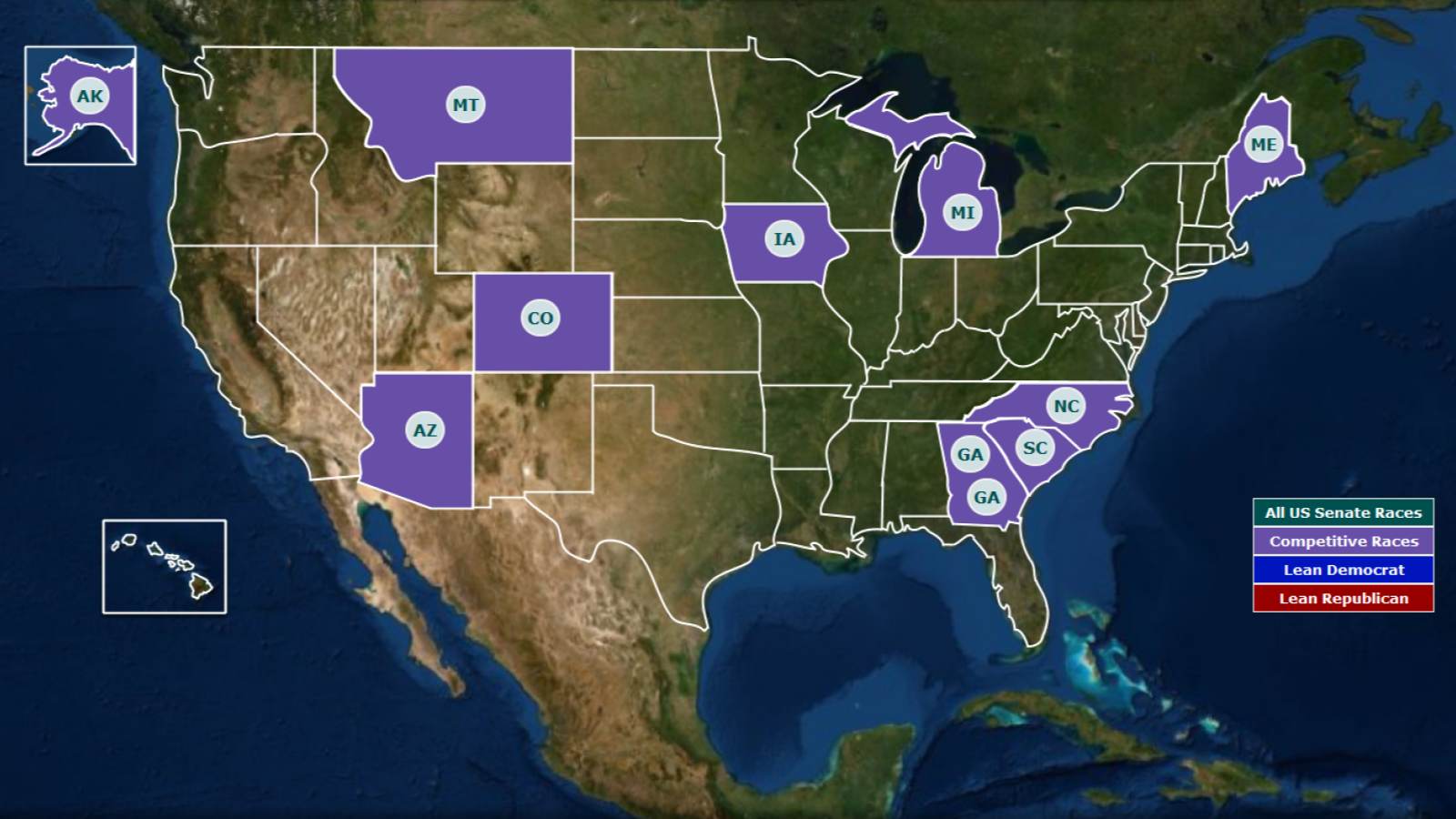> The US onAir network is currently focusing on the 35 US Senate elections this year, particularly the competitive races. The selection of the states shown in the feature image are based on polls with a +/- difference of 5% or less.
> After the federal and state elections are concluded, this US onAir Hub and the 50 state hubs in the US onAir network will focus on governance.
> To view all the the competitive races, select the feature image or the post title above. To view specific races by region, toggle the post navigation (the three dots beside the post title).
Summary
> The US onAir network is currently focusing on the 35 US Senate elections this year, particularly the competitive races. The selection of the states shown in the feature image are based on polls with a +/- difference of 5% or less.
> After the federal and state elections are concluded, this US onAir Hub and the 50 state hubs in the US onAir network will focus on governance.
> To view all the the competitive races, select the feature image or the post title above. To view specific races by region, toggle the post navigation (the three dots beside the post title).
About
Source: Wikipedia
In the 2014 United States Senate elections (the last regularly scheduled elections for class 2 Senate seats), the Republicans won nine seats from the Democrats and gained a majority in the Senate. Republicans defended that majority in 2016 and 2018, and now hold 53 Senate seats. Democrats hold 45 seats, and independents caucusing with the Democratic Party hold two seats.
Including the special elections in Arizona and Georgia, Republicans will be defending 23 seats in 2020, while the Democratic Party will be defending 12 seats. Democrats will need to pick up three or four seats to gain a majority, depending on which party wins control of the vice presidency.
The following summaries of the competitive races listed in the post are derived from this Wikipedia entry.



























